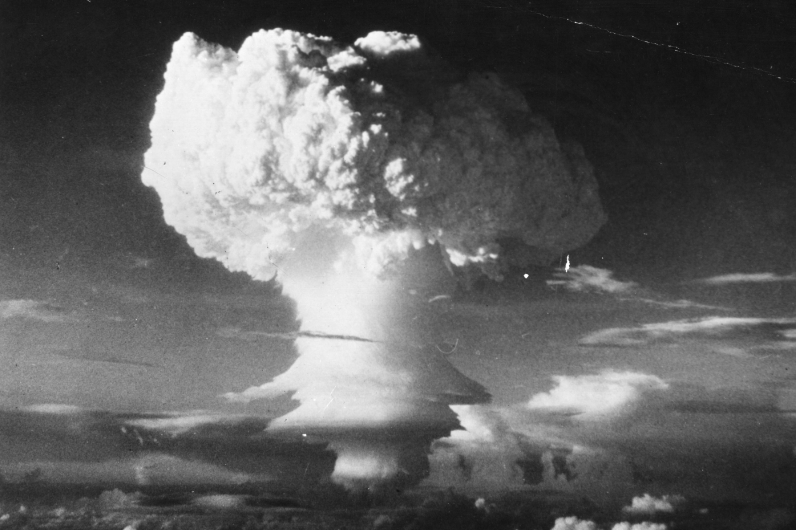
Point, Counter-Point: Nuclear Weapons – Status or Security?
Earlier in this series:
Point: The South Asian Nuclear Trajectory – From Reluctance to Readiness
Counter-Point: The Perception Differential
Point: Status and Security, an Inverse Relationship?
***
Since the advent of the nuclear age, the impact of weapons of mass destruction has changed the dynamics of the international system and the shape and nature of modern warfare. Although the relationship between ‘technology’ and ‘politics’ remains opaque and fluid (and caught in the chicken-egg dilemma), the quest for nuclear technology is an important driving factor in redefining various states’ national interests. George P. Shultz’s prophetic phrase ‘proliferation begets proliferation’ aptly encapsulates state behavior embedded in the security dilemma. Viewed through a realist prism, the state’s desire to acquire and possess the ‘absolute weapon’ is epidemic in nature, and is more prevalent in the conflict-prone regions of the world unless alternate security arrangements such as collective security and/or extended deterrence are available. In this context, the strategic elite and decision-makers in a state perceive nuclear weapons as guarantor of national security.Thus, the rationale for the pursuit of nuclear capability often begins with the hardcore security premise, coupled with the pursuit of prestige or status, or simply through the technological allure of developing the peaceful uses of atomic energy.
Similarly the logic of security and prestige in case of Pakistan and India (respectively) is relevant to the understanding of the nuances of the proliferation puzzle in South Asia. Theoreticians have been skeptical of considering security the sole determining factor for acquiring nuclear weapons. Certainly, there are different drivers responsible for nuclear proliferation, varying from one state to another. It is important to understand the proliferation conundrum from the prism of the ‘Levels of Analyses’ approach as espoused by Kenneth Waltz. In this respect, different variables operating at systemic, regional, and domestic levels are responsible for creating the situation feasible and necessary for a state to synchronize efforts in the pursuit of nuclear capabilities.
It is also pertinent to observe that Scott Sagan’s debate of the domestic politics model lends credence to an important cadre of decision makers involved in the nuclear decision making of any country (i.e. the role of the scientific community and the strategic elite). Any political decision pertaining to nuclear weapons therefore promotes the interests and ambitions of a country’s scientific elite which might also be propelled by the same elite itself.
This understanding reminds us of Scott Sagan’s “parochial domestic and bureaucratic interests’” making nuclear weapons as political tools. The Indian nuclear program/policy cannot be isolated from the Nehru-Bhabha (1947-1964) alliance that brought the political and scientific strings together. This cooperation was based on three elements i.e. 1) develop R&D capabilities, 2) support peaceful uses of nuclear energy without renouncing the option of nuclear weapons, 3) support universal disarmament while maintaining non-alignment. In the ensuing years, India’s strategic enclave continued to work at its pre-determined direction and pace irrespective of shifts in political slogans and governments aimed at developing a broad technological base and making the Smiling Buddha a direct dividend of international cooperation extended under the Atoms for Peace Program.
The drive of the scientific community, strategic organizations, and bomb enthusiasts to carry and accomplish the task of weapon acquisition is also a matter of personal prestige for the organizations and the scientists and engineers. An additional driving factor of key individuals working in the field of nuclear science and engineering and associated disciplines is the inherent fascination for exploring new vistas of nuclear science. Consequently, the development of atomic energy, both for peaceful and military purposes, becomes part of the organizational cultures within particular societies and its strategic culture leading up to the genesis of nuclear nationalism. Adored as a ‘symbol of pride,’ nuclear weapons are revered to such an extent that they are considered as a panacea for resolving many if not all issues afflicting the society.
The case of Pakistan is not different in this regard. Over the years, it is observed that despite the rejection of the nuclear option during President Ayub Khan’s era, the quest for nuclear technology remained firm within the scientific elite while the bomb lobby was rejuvenated with Bhutto’s political revival. The country’s nuclear establishment subsequently enjoyed complete autonomy in decision-making and retained the trust and confidence of successive political and military governments, and was resolved to prove their scientific mettle. The dismemberment of East Pakistan in 1971 transformed this resolve into an irrevocable commitment of developing the nuclear deterrent.
However, besides building nuclear weapon programs, both India and Pakistan have also continued to invest in the development of nuclear fuel cycle technologies along with other peaceful applications of atomic energy such as nuclear medicine, agriculture and nuclear energy—the Indians still striving to achieve the goal of a three-stage nuclear energy program. The past fifteen years of overt nuclearization have seen technological maturation and nuclear modernization as a central element of an arms race which is consistently being fuelled by the pull of emerging weapon technologies that are now determining the security calculus of decision-makers in India and Pakistan. These trends suggest that the technological momentum generated by the introduction of force multipliers and emerging weapon systems such as SLBMs, missile defenses, and supersonic and hypersonic cruise missiles, network-centric and cyber warfare and the impending space competition will play a central role in deciding the outcome of strategic stability in South Asia. Thus, technology remains an independent variable apart from external pressures driving state objectives for the quest of bomb, and associated requirements of command and control and doctrines for a truly functional and operational deterrent.
***
Image: Three Lions, Getty